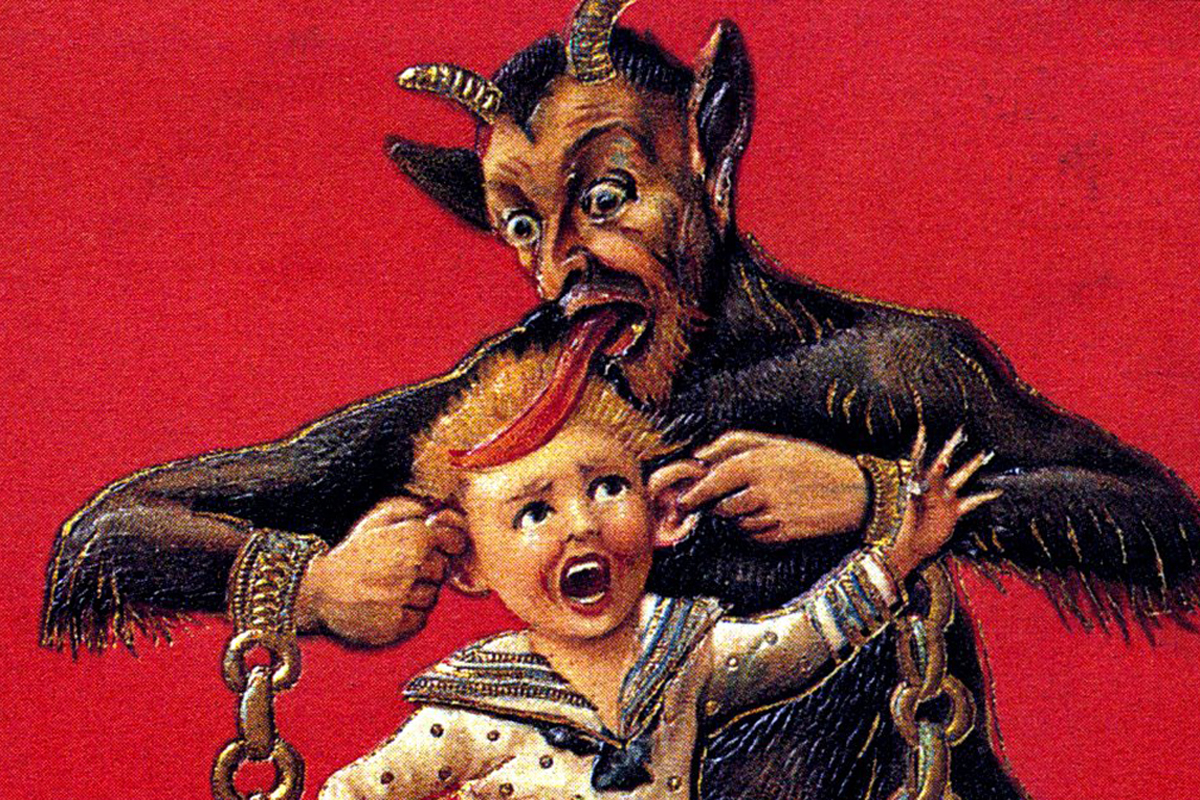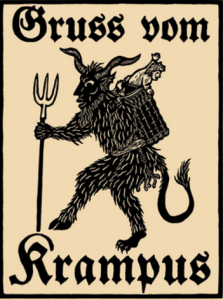Malang, December 25th 2015
By Amanda Ade Winona
Another Bavarian folklore along with the existence of Saint Nikolaus named Krampus. On a cold snowy night, when that white-bearded old man come with a sack of gift for good children, a mystical myth Krampus, in the other hand, approaches with a dreadfulness atmosphere for bad children. Krampus described as a satyr with cloven hooves, goat-horned, fangs, lolling red tongue, shaggy black-hair around his body, and a long tail. He always brings a bundle of birch-twigs, wooden tub on his back, and chains hang from his wrists that are rattled. The wicked kids whose get the rod in their boots instead of gift will be visited by Krampus. He will throw the kids to the wooden tub, bond with the chain, swat the naughty children with the birch-twigs, and haul the kids to his lair to the underworld. Krampus also known as Bartl, Niglobartl, Wubartl, and Klaubauf in Styrian names. The history of Krampus is not clearly well-known, as once said that he is the remnant of pagan tradition where it is related to certain rites of witch-covens. Other linked it with political interest as Krampus was despicable because it was considered a creation of the Social Democrats in World War II.

Bibliography
Basu, Tanya. 2013. Who Is Krampus? Explaining the Horrific Christmas Devil. D.C.: National Geographic.
Bruce, Maurice. 1958. The Krampus in Styria. Taylor & Francis, Folklore Enterprise. Vol. 69, No.1 (Mar., 1958), pp. 45-47
Gerald, Brom. 2012. The Yule Lord. London: Harper Voyager.
Follow Instagram @kompasianacom juga Tiktok @kompasiana biar nggak ketinggalan event seru komunitas dan tips dapat cuan dari Kompasiana
Baca juga cerita inspiratif langsung dari smartphone kamu dengan bergabung di WhatsApp Channel Kompasiana di SINI






